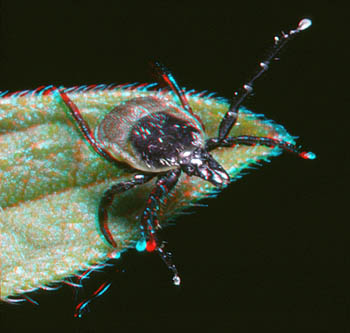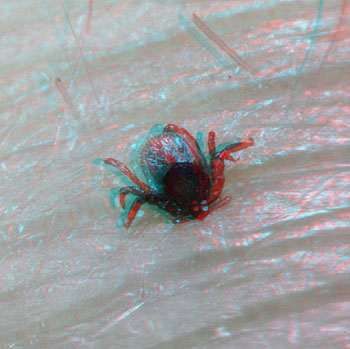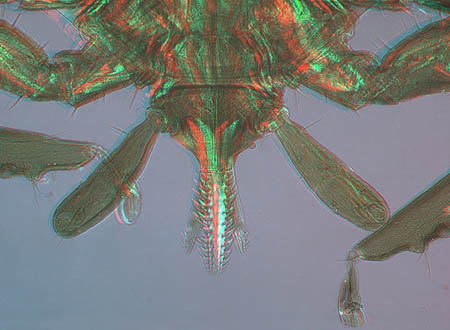a three-dimensional photo survey by Wim van Egmond, the Netherlands

Ticks are small relatives of spiders. With the mites (see water-mites and dust-mites) they form the order Acarina. Many of these tiny creatures are parasites. Like almost all spider relatives they can only feed on liquids. What better juice is there to find than blood! And ticks are specialists in sucking blood.

